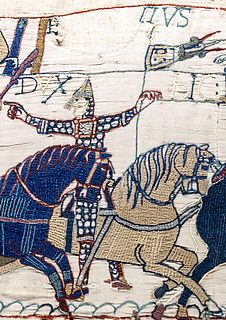
Embroidery is the craft of decorating fabric or other materials using a needle to apply thread or yarn. Embroidery may also incorporate other materials such as pearls, beads, quills, and sequins. In modern days, embroidery is usually seen on caps, hats, coats, overlays, blankets, dress shirts, denim, dresses, stockings, and golf shirts. Embroidery is available in a wide variety of thread or yarn colour.

Berlin wool work is a style of embroidery similar to today's needlepoint that was particularly popular in Europe and America from 1804 to 1875. It is typically executed with wool yarn on canvas, worked in a single stitch such as cross stitch or tent stitch, although Beeton's book of Needlework (1870) describes 15 different stitches for use in Berlin work. It was traditionally stitched in many colours and hues, producing intricate three-dimensional looks by careful shading. Silk or beads were frequently used as highlights. The design of such embroidery was made possible by the great progress made in dyeing, initially with new mordants and chemical dyes, followed in 1856, especially by the discovery of aniline dyes, which produced bright colors.

The Royal School of Needlework (RSN) is a hand embroidery school in the United Kingdom, founded in 1872 and based at Hampton Court Palace since 1987.
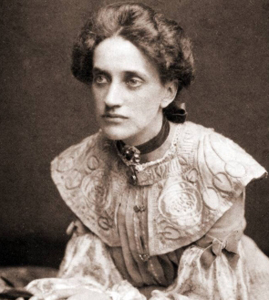
Ann Macbeth was a British embroiderer, designer, teacher and author, a member of the Glasgow Movement and an associate of Charles Rennie Mackintosh. She was also an active suffragette and designed banners for suffragists and suffragettes movements.

Crewel embroidery, or crewelwork, is a type of surface embroidery using wool. A wide variety of different embroidery stitches are used to follow a design outline applied to the fabric. The technique is at least a thousand years old.

Chain stitch is a sewing and embroidery technique in which a series of looped stitches form a chain-like pattern. Chain stitch is an ancient craft – examples of surviving Chinese chain stitch embroidery worked in silk thread have been dated to the Warring States period. Handmade chain stitch embroidery does not require that the needle pass through more than one layer of fabric. For this reason the stitch is an effective surface embellishment near seams on finished fabric. Because chain stitches can form flowing, curved lines, they are used in many surface embroidery styles that mimic "drawing" in thread.

Broderie anglaise is a whitework needlework technique incorporating features of embroidery, cutwork and needle lace that became associated with England, due to its popularity there in the 19th century.
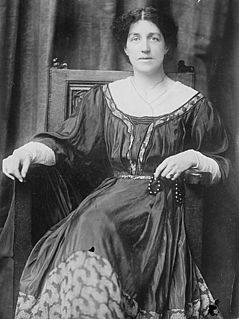
Mary "May" Morris was an English artisan, embroidery designer, jeweller, socialist, and editor. She was the younger daughter of the Pre-Raphaelite artist and designer William Morris and his wife and artists' model, Jane Morris.
Leon Conrad is a British polymath: writer, story structure consultant, educator, and specialist in historic needlework techniques known particularly for historically-styled blackwork embroidery designs.

Ukrainian embroidery occupies an important place among the various branches of Ukrainian decorative arts. Embroidery has a rich history in Ukraine, and has long appeared in Ukrainian folk dress as well as played a part in traditional Ukrainian weddings and other celebrations. Appearing all across the country, Ukrainian embroidery varies depending on the region of origin. From Poltava, Kyiv, and Chernihiv in the east, to Volyn and Polissia in the northwest, to Bukovyna, and the Hutsul area in the southwest, the designs have a long history which defines its ornamental motifs and compositions, as well as its favorite choice of colors and types of stitches.

English embroidery includes embroidery worked in England or by English people abroad from Anglo-Saxon times to the present day. The oldest surviving English embroideries include items from the early 10th century preserved in Durham Cathedral and the 11th century Bayeux Tapestry, if it was worked in England. The professional workshops of Medieval England created rich embroidery in metal thread and silk for ecclesiastical and secular uses. This style was called Opus Anglicanum or "English work", and was famous throughout Europe.
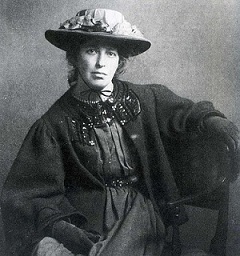
Jessie Newbery was a Scottish artist and embroiderer. She was one of the artists known as the Glasgow Girls. Newbery also created the Department of Embroidery at the Glasgow School of Art where she was able to establish needlework as a form of unique artistic design. She married the director of the Glasgow School of Art, Francis Newbery, in 1889.

Magna Carta is a 2015 work by English installation artist Cornelia Parker. The artwork is an embroidered representation of the complete text and images of an online encyclopedia article for Magna Carta, as it appeared in English Wikipedia on 15 June 2014, the 799th anniversary of the document.
The clothing of the Baloch people consists of various styles of kameez and shalwar, turban, shoes and head scarfs.

Embroidery was an important art in the Islamic world from the beginning of Islam until the Industrial Revolution disrupted traditional ways of life.
Elizabeth (Bessie) Burden was an English embroiderer and teacher. She was a member of the Arts and Crafts Movement, and worked for the embroidery department of Morris, Marshall, Faulkner & Co. She was the sister of Jane Morris and sister-in-law of the artist, designer and poet, William Morris.
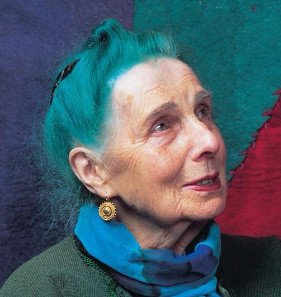
Constance Mildred Howard, later Constance Parker, was an English textile artist and embroiderer who had a profound impact on the development and teaching of those subjects in Britain. The Constance Howard Gallery, part of Goldsmiths, University of London, is named in her honour.
Louisa Pesel (1870–1947) was an English embroiderer, educator and textile collector. She was born in Bradford, and studied textile design at the National Art Training School, causing her to become interested in decorative stitchery. She served as the Director of the Royal Hellenic School of Needlework and Lace in Athens, Greece from 1903-1907. Pesel served as the first President of the Embroiderers' Guild. She produced samplers for the Victoria and Albert (V&A) Museum and cushions, kneelers, alms bags and a lectern carpet for Winchester Cathedral. She collected textiles extensively, and following her death in Winchester in 1947, her collection went to the University of Leeds.
Winsome Douglas (1919-2016) was a British embroiderer and teacher active in the United Kingdom in the 1950s and 1960s. She was born in Hartlepool in County Durham in 1919, and died at the age of 97 on 28 December 2016 in Hartlepool.
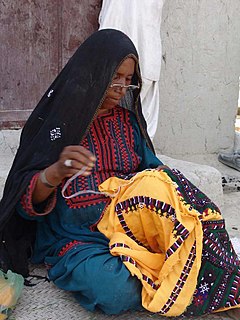
Balochi needlework is a type of handicraft made by the Baloch people. It is considered a heritage art, has been recognized by UNESCO, and it sells internationally.















